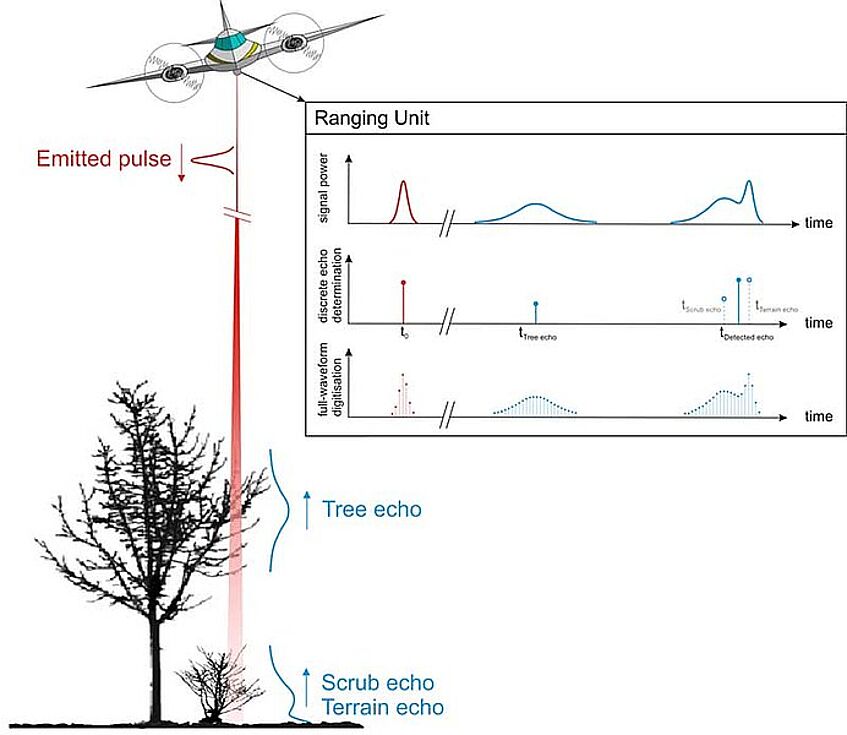Data Acquisition
Currently, there are two different types of ALS sensor system available: discrete echo scanners (conventional scanners) and full-waveform scanners. Discrete echo scanners detect a limited number of echoes for each laser pulse in real time using analogue detectors. While most detectors deliver only the first and last echo, some can distinguish up to four distinct echoes from multiple targets from a single laser pulse. These sensors can be considered to be “lossy” as the majority of the received signal is discarded by the analogue detectors.
Full-waveform scanners sample the entire analogue echo waveform for each emitted laser beam (typically with an interval of 1 ns). Therefore, they discard significantly less data than conventional scanners during the data collection process. The echo waveform has to be post-processed (Wagner et al., 2006). During post-processing the full waveform can be modelled as a series of Gaussian distribution functions (Hug et al., 2004; Wagner et al., 2006), each representing an individual laser – object interaction. This means that the user is not restricted to a group of discrete echoes controlled by a detector but can generate his own algorithms that respond to the physical and biological environments within which the laser interacts.
By modelling the full waveform as a series of Gaussian distribution functions, individual scatterers can be distinguished (Hofton et al., 2000; Wagner et al., 2006). The results are estimates of the location and scattering properties of the individual targets: for each returning echo of a single laser pulse, the estimated coordinates of the scatterer, the echo width, and the amplitude is determined. Using amplitude and echo width, it is possible to investigate the return signal and extract additional ground characteristics. Consequently, much more information is available when classifying the point cloud into solid ground and vegetation cover. In a recent paper, the usage of a simple threshold operation in order to pre-exclude points situated within low vegetation or other structures as for example clearance piles (consisting of twigs and branches) is demonstrated (Doneus and Briese, 2006a).
In our case studies, a RIEGL Airborne Laser Scanner LMS-Q560 operated by the company Milan Flug GmbH was used to collect the full-waveform ALS data during April 2006 and April 2007.

